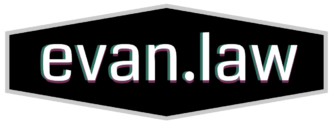[Brian Beckham is a contributor to Internet Cases and can be contacted at brian.beckham [at] gmail dot com.]
Lemerond v. 20th Century Fox, No. 07-4635, 2008 WL 918579 (S.D.N.Y. March 31, 2008)
In the movie Borat: Cultural Learnings of America for Make Benefit Glorious Nation of Kazakhstan, the fictional Kazakh character (alter ego of comedian Sacha Cohen) journeys to America — all the while videotaping his interactions with unsuspecting people. One scene shows Borat greeting plaintiff Lemerond (“Hello nice to meet you. I’m new in town. My name a Borat”), then promptly running off in the opposite direction screaming (“Get away! What are you doing?”). (Those who have not seen the movie should note that the text does not capture the awkwardness of the exchange). The 13-second clip is shown twice in the full-length film, as well as in a movie trailer (but in the trailer the plaintiff’s face is blurred).
Plaintiff Lemerond filed suit under New York Civil Rights Law section 51 and New York common law for the unlawful use of his image. Defendant 20th Century Fox filed a 12(b)(6) motion to dismiss the suit for failure to state a claim. The court granted the motion.
Since New York does not recognize a common law right of privacy (the related right of publicity, like a trademark must be used in commerce to identify the source of goods or services — celebrities would normally enjoy such a right), the court decided the plaintiff’s suit on the basis of whether his likeness was used for “advertising purposes or purposes of the trade” without written permission. The most significant question was whether his appearance in the clips and trailer was for advertising purposes.
The court offered what might be considered a strained reading of the New York statute. It first cited to case law that held the statute was limited to “nonconsensual commercial appropriations of the name, portrait, or likeness of a living person.” It then pointed to another case which held that the nonconsensual use of a person’s image to depict “newsworthy events or matters of public interest” is protected by the statute. The court then quoted yet another case stating that this newsworthiness exception broadly covered “social trends, or any subject of public interest” and went on to observe that “public interest” and “newsworthy” have been defined in the most liberal and far reaching terms. Accordingly, the court found that Borat’s antics fit “squarely” within the newsworthiness / social commentary exception of the New York statute, stating that
[T]he movie employs as its chief medium a brand of humor that appeals to the most childish and vulgar in its viewers. As its core, however, Borat attempts an ironic commentary of ‘modern’ American culture…challeng[ing] its viewers to confront, not only the bizarre and offensive Borat character himself, but the equally bizarre and offensive reactions he elicits from ‘average’ Americans.
In a footnote, the court approvingly cited a 1970 case in pointing out that “the mere fact that defendants are spurred by the profit motive and engaged in the commercial exploitation of [a] motion picture does not negate their right to depict a matter of public interest or to advertise the picture by the showing of a ‘trailer’.”
Perhaps an open question is when, if ever, a New York news reporter or movie producer would need permission to use a non-celebrity’s image in his or her reporting, movie, or advertising, i.e., on a subject not necessarily in the public interest.


